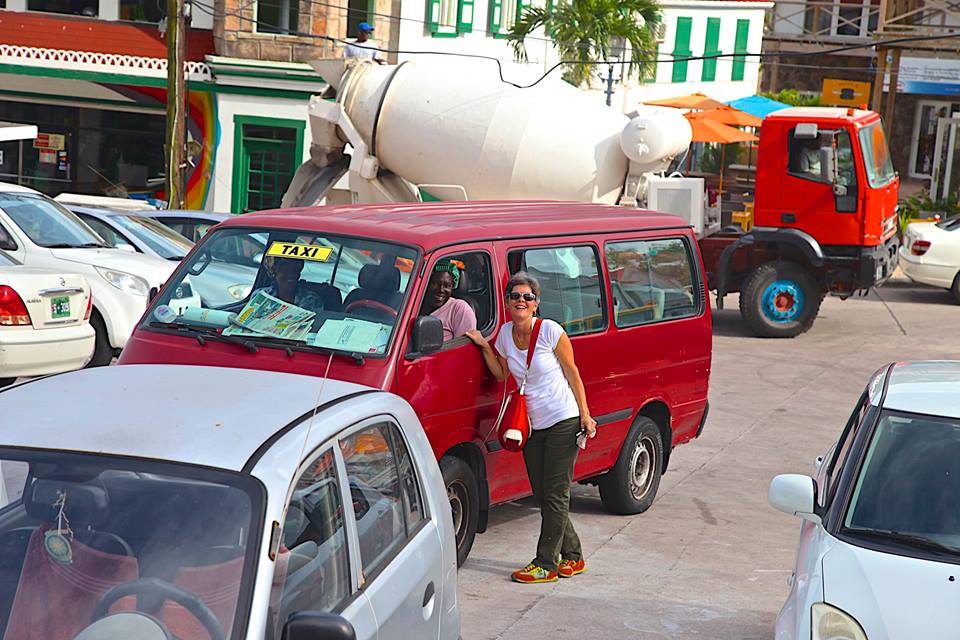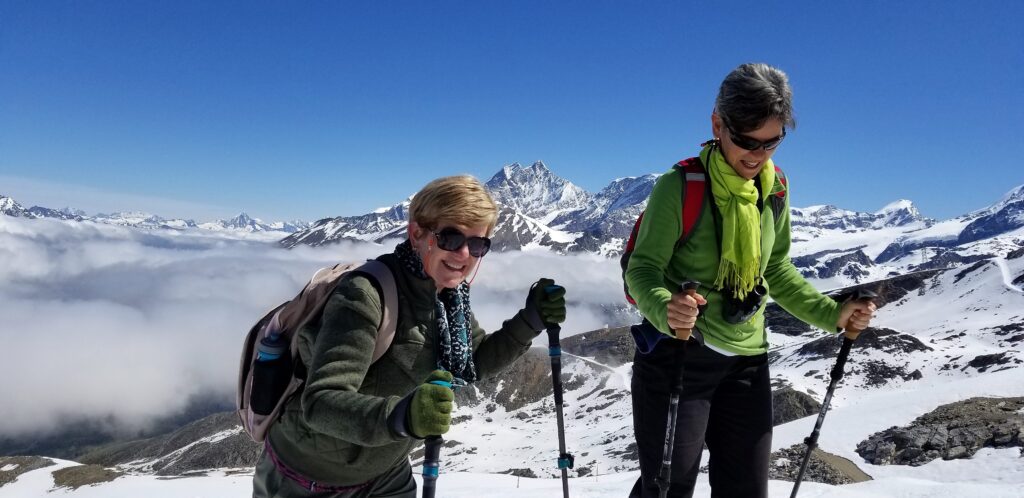 Zermatt, Switzerland – It’s a no-brainer that visiting museums and historic sites can make a vacation an educational experience. But kinetic activities, say a heart-rate elevating rafting trip or a tour by bike can also make us smarter.
Zermatt, Switzerland – It’s a no-brainer that visiting museums and historic sites can make a vacation an educational experience. But kinetic activities, say a heart-rate elevating rafting trip or a tour by bike can also make us smarter.
People who immerse themselves in nature get other benefits too, including enhanced memory, cognitive function and creativity, a feeling of well-being and bonding opportunities with like-minded fellow travelers.
That science backed up what I’d already believed to be true was liberating. No longer did I have to feel guilty about choosing to go snorkeling instead of an edifying but more sedentary outing like visiting a local landmark.
The first thing I did on learning this news was plan a hiking trip in Switzerland with my sister, Lee, in the care of Greg Witt, a mountain climber and owner of Alpenwild Tours. He has witnessed many times the process that turns a walk in the wild into something that enhances the body, the mind and yes, even the memory.
“I have a lot of guests who will come and talk to me,” Witt said of his repeat visitors. They would tell him a something they remembered about a previous trip; an unexpected downpour, or an eating spot where they dined and he’d be stumped. “They’ll have a much more vivid memory than I would have imagined.”
 The mechanism for some of this enhanced mental health seems to come from physical exertion that increases the brain’s production of a protein known (for short) as BNDF and also known to improve learning and memory. When one adds intellectual challenges to aerobic physical activity the brain exercises along with the body.
The mechanism for some of this enhanced mental health seems to come from physical exertion that increases the brain’s production of a protein known (for short) as BNDF and also known to improve learning and memory. When one adds intellectual challenges to aerobic physical activity the brain exercises along with the body.
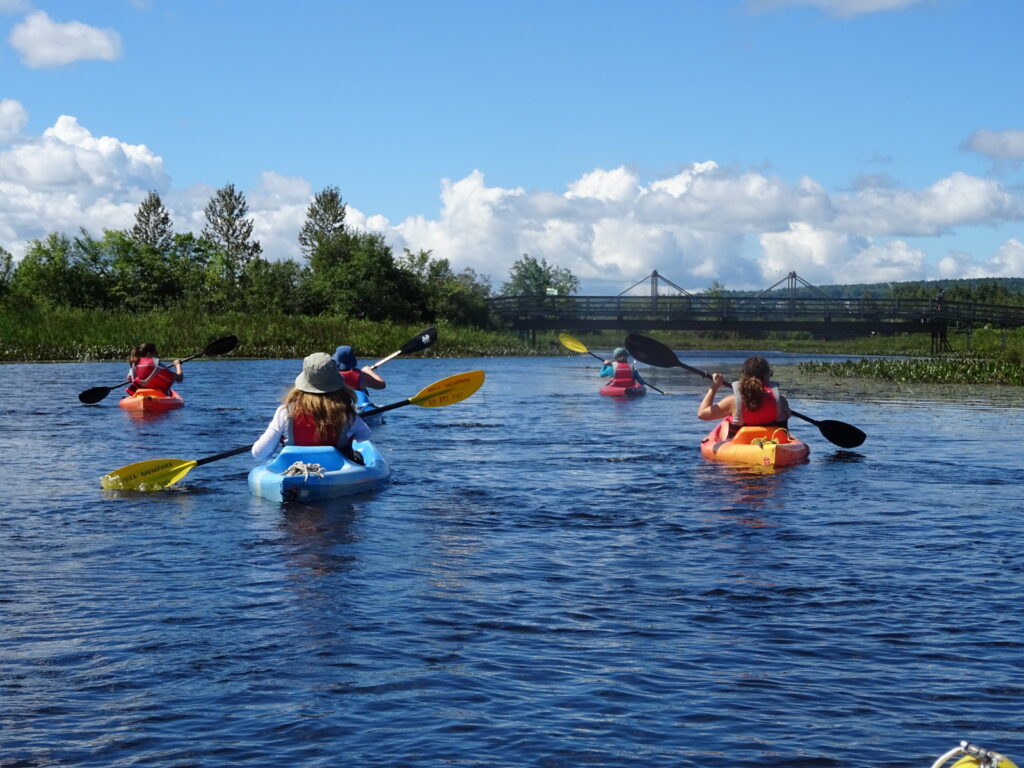 Kayaking, biking, running, it doesn’t really matter, it is the mindfulness required that triggers it. Or as Witt explained, “You’re constantly making decisions watching and processing many things simultaneously. This kind of active mental activity has been shown to improve brain health.”
Kayaking, biking, running, it doesn’t really matter, it is the mindfulness required that triggers it. Or as Witt explained, “You’re constantly making decisions watching and processing many things simultaneously. This kind of active mental activity has been shown to improve brain health.”
Lee and I hadn’t even met up with Witt for our two-day hike in mountains of Zermatt before we saw first-hand how hiking would heighten our awareness.
Before leaving home, we’d studied photos of the area where Witt intended to take us, including the mother of many mountains, the Matterhorn. It was a lot of inclines. And so, ignoring Witt’s assurances that we would be fine and no special preparation was needed, we worried.
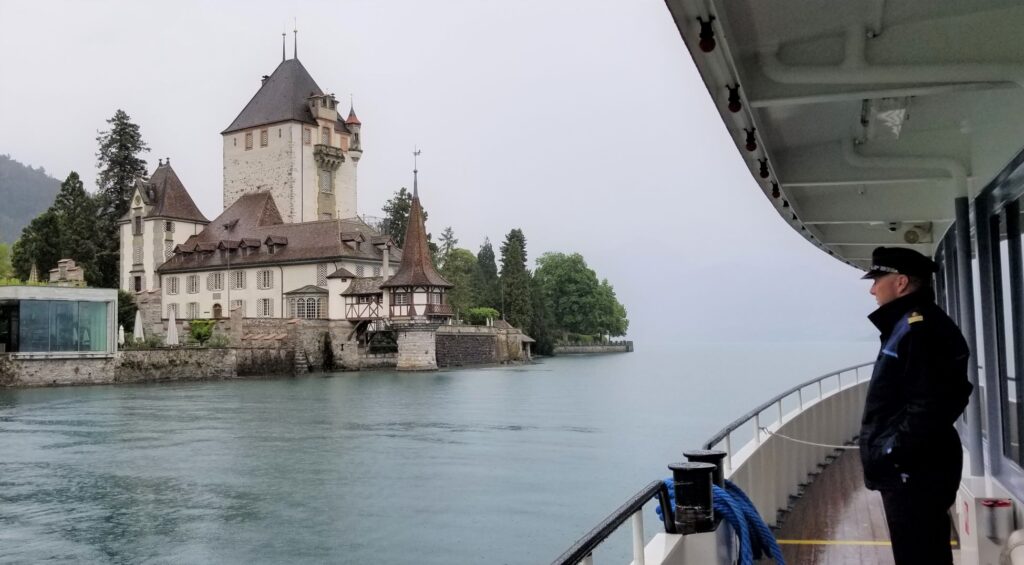
We arrived in the area and spent a few days near where our meet-up with Witt was planned, at an adorable town called Thun. Here we planned a little warm-up exercise. We took a paddle boat to the harbor at Beatenbucht and then the funicular and a cable car to the Neiderhorn, a total and totally assisted climb to 6,200 feet. Our plan was to spend the afternoon hiking back to the harbor.
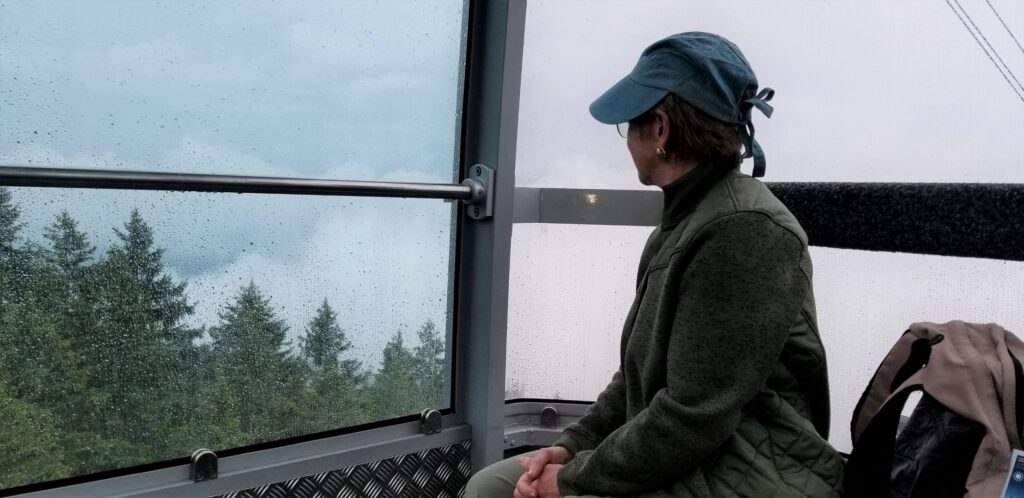 Our cable car arrived at the top just as the heavens opened so we cowered in the little café until the rain subsided. The trail was sill clammy and uninviting under a grey cotton sky. But we were here to walk and so we did.
Our cable car arrived at the top just as the heavens opened so we cowered in the little café until the rain subsided. The trail was sill clammy and uninviting under a grey cotton sky. But we were here to walk and so we did.
The soggy footpath led us through wide-open meadows, we stepped carefully to avoid the wettest areas, stopping when we caught glimpses of the lake far below. Then suddenly as if a switch had been flipped, the dismal mist was seared into oblivion and the summer sun lit up the landscape like a movie set. We halted in wonder. No lesson in meteorology would have had the impact of that moment. We hadn’t met Witt yet and he was already proven right about one thing; it was an experience we would never forget.
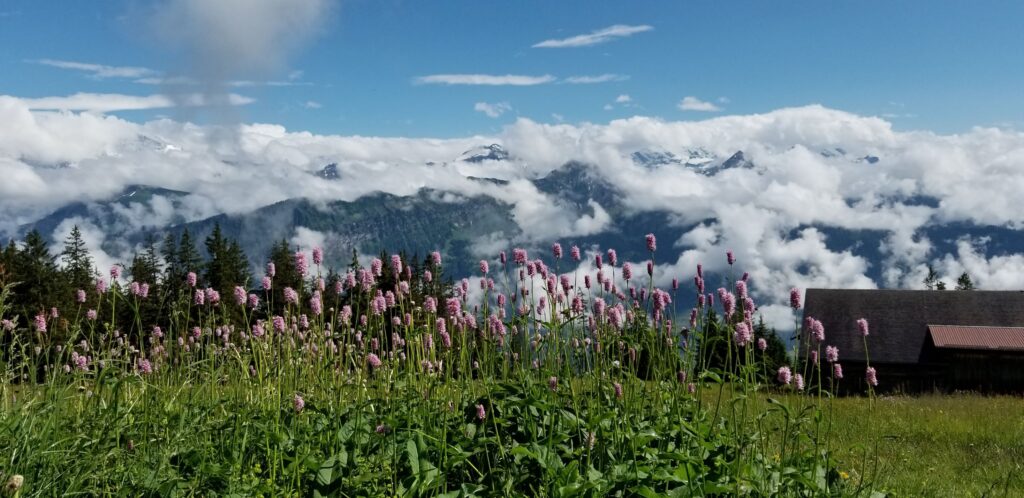
Our first day of hiking with Witt as our guide began with a stroll through Zermatt. He took us around the centuries-old timber structures in the Hinterdorf then up to the English Church St. Peters.
The Reverend John Kinchin-Smith, invited us to the tidy plot of grass to the left of the church entrance to see the grave markers of the first climbers to ascend the Matterhorn. Seven reached the peak that day 157-years ago on July 14th, only three survived the descent.
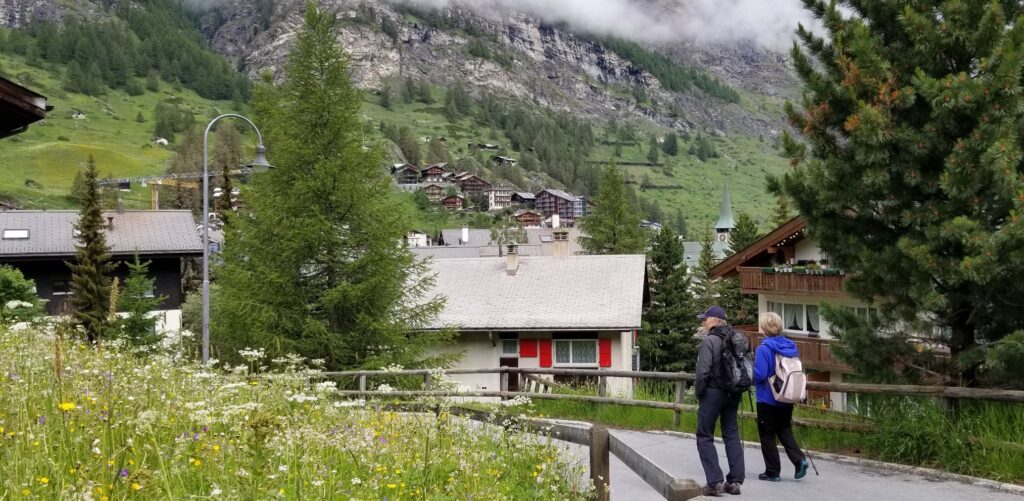
I like to walk as much as the next gal, but the story told by Kinchin-Smith was the first time I’d found myself so interested in the heroics of the pioneers of mountain climbing. Yet we were not the only visitors to find a special poignance at this church. Facing the altar, three Taiwanese ladies dressed to hike, were singing Amazing Grace in perfect harmony.
“Often, those on holiday, have time and space to reflect upon the most important questions of life,” Kinchin-Smith explained. “The awesome grandeur and majesty of the snow-capped Alpine mountains cannot leave people unmoved. Many have reflected upon that – especially mountaineers.”
From there, Witt led his neophyte charges via cable car to Furi, 6100 hundred feet above sea level and we started downhill – passing through meadows, forests of larch trees, the occasional cabin and a row of colorful letterboxes.

We registered the earthy smell of the dirt path and slices of sky between the mountain peaks. Tufts of wild grasses sat like toupees on the crania of enormous boulders. Mostly though, we paid attention to where we placed our feet.
“You’re constantly making decisions watching and processing many things simultaneously,” Witt said. “This kind of active mental activity has been shown to improve brain health.”
In a 2006 article for eLife Digest, a U.S. Government publication, Sama Sleiman of Lebanese American University explains that in terms of human evolution, exercise and mental function had to be intertwined because the human response to danger required it.
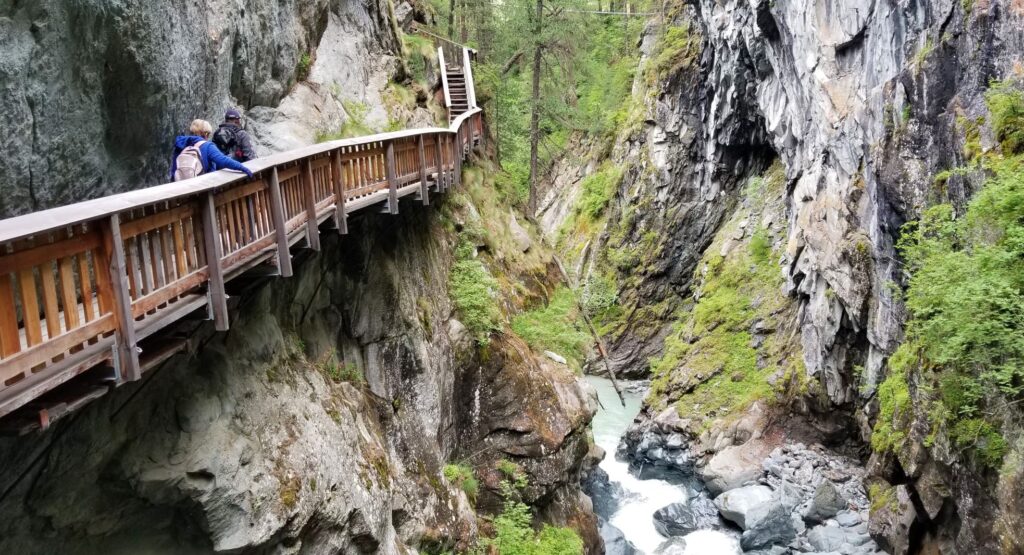
We were locating hazards and mapping our surroundings alright, but there was no stress involved as we hiked the Gorner Gorge trail. The rock formations and pools of turquoise-colored water created by the relentless running of the river were spectacular. It only got better the following day when Witt guided us upward once again for an up-close view of the Matterhorn that left us and many others, speechless. Enveloped in a silent companionship with the strangers around us, we shared the magnificent view.
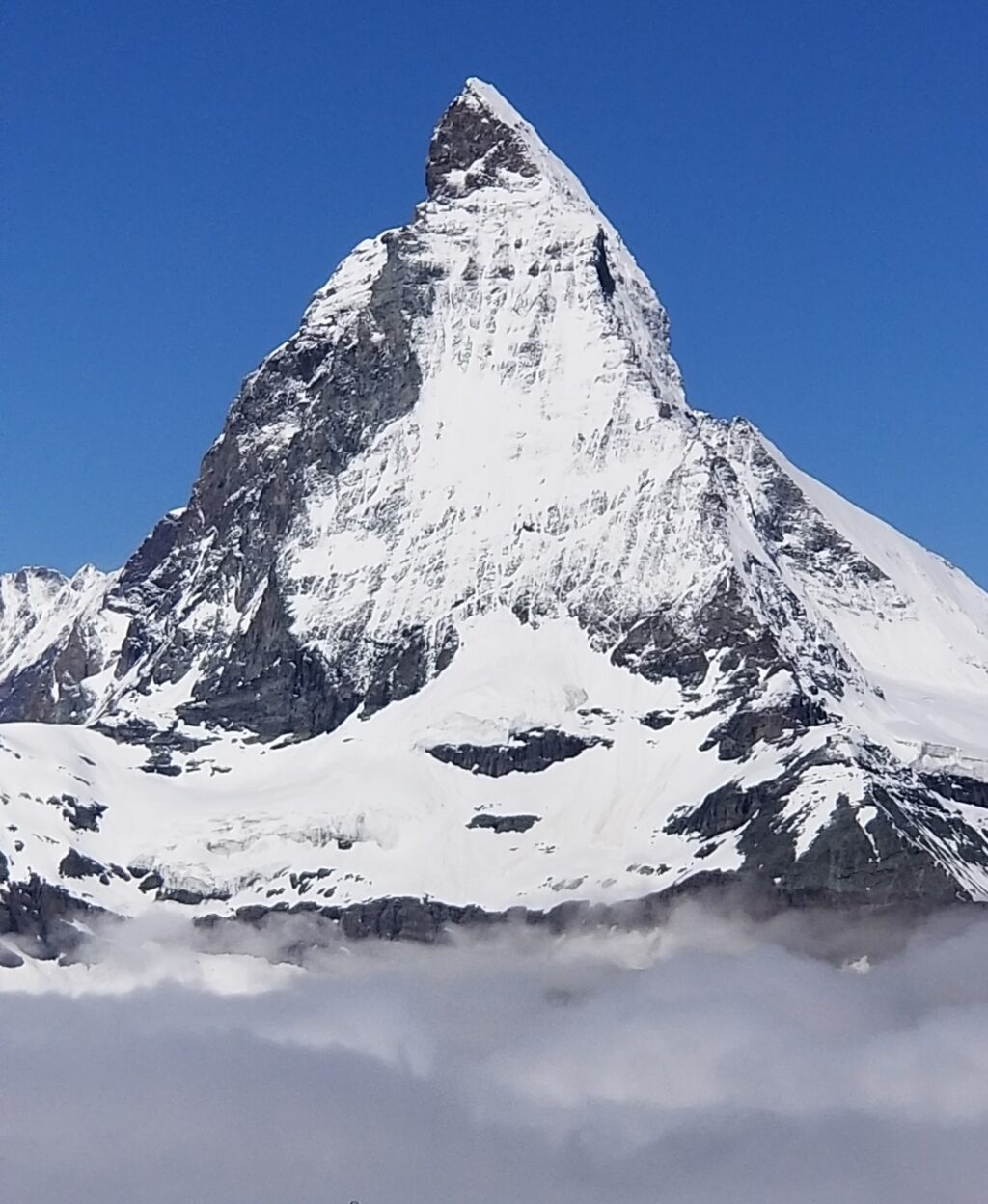
This is a subject journalist Richard Louv has also given considerable attention to as the author of ten books on the relationship between nature and humans including, Our Wild Calling. A long-time evangelist for the benefits of spending time out of doors, he had an epiphany about how nature breaks down the barriers that separate people when he moved to a rural hiking and trekking area in Southern California.
“It’s the nature,” he told me. “I suddenly realized we were all talking about the effect of the forest on us and the lives of other life forms up here and I realized we were talking about something outside of ourselves. We were getting outside of ourselves.”
Traditional sightseeing; culinary-themed tours, cruises and other indoor activities have lost their luster under the still-present threat of coronavirus. If Witt, Louv and others are correct, making an outdoor and physically exertive trip might be the smartest vacation choice as well as the one best remembered.
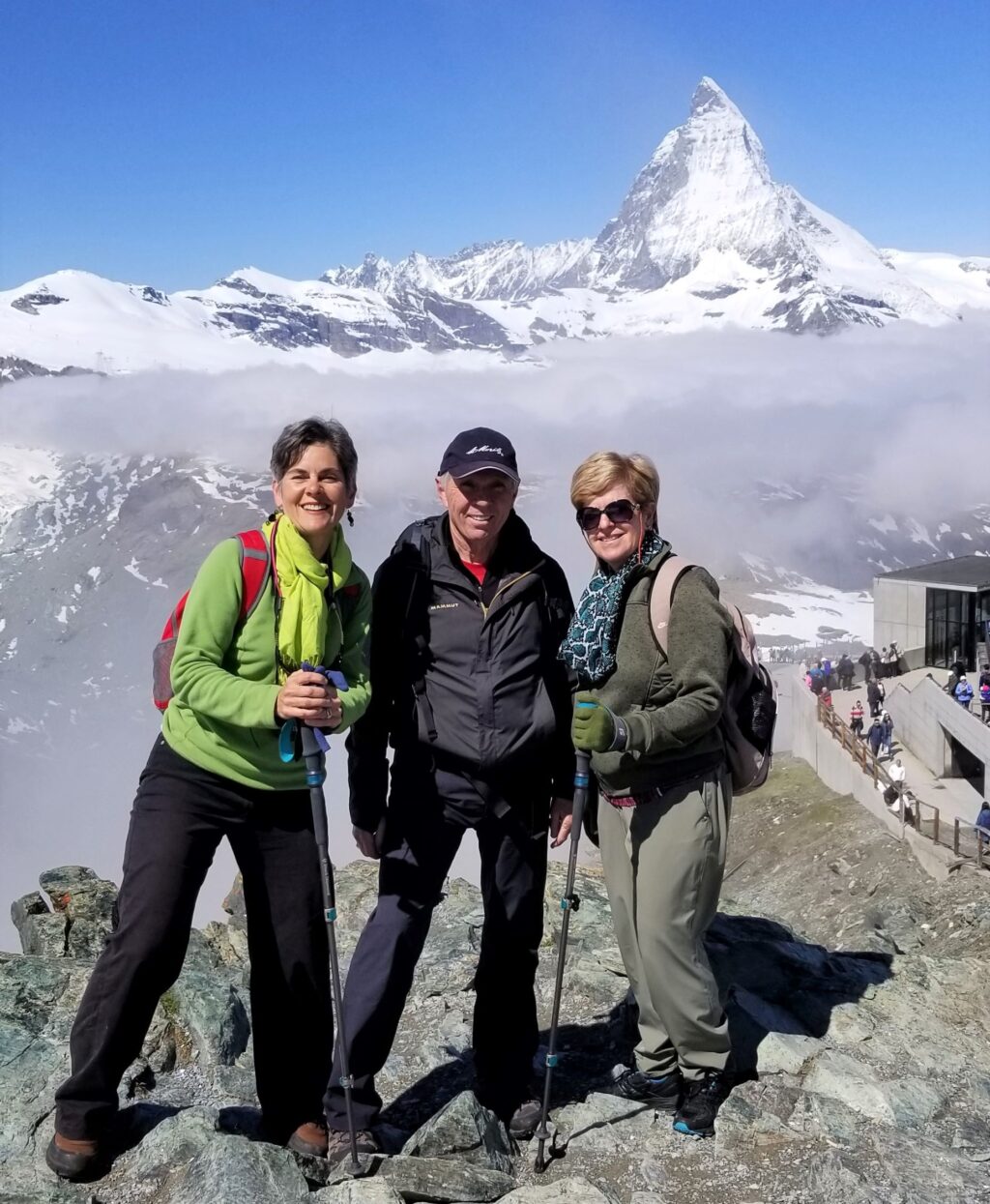

Author of The New York Times bestseller, The Crash Detectives, I am also a journalist, public speaker and broadcaster specializing in aviation and travel.
